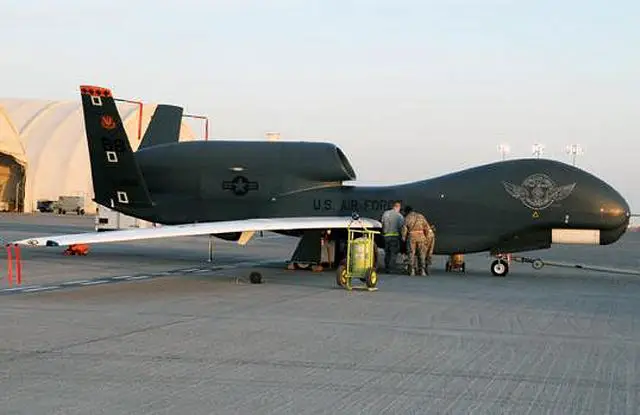Breaking news
Japanese army plans to add Global Hawk unmanned aerial vehicle for reconnaissance duties in 2015 24.
| a | |||
Defence & Security News - Japan |
|||
| Saturday, August 24, 2013 04:42 PM | |||
| Japanese army plans to add Global Hawk unmanned aerial vehicle for reconnaissance duties in 2015 | |||
The Japanese
government has planned to add the Global Hawk unmanned aerial vehicle
(UAV) for reconnaissance duties in 2015, local media reported Friday,
August 24, 2013. The Yomiuri Shimbun newspaper quoted government officials
as saying that the Ministry of Defense will boost its spending for the
next fiscal year, by adding an additional 200 million yen (2 million U.S.
dollars) to cover the introduction of the UAV in fiscal 2015. |
|||
| |
|||
 U.S. Airmen with the 380th Expeditionary Aircraft Maintenance Squadron conduct preflight services on an RQ-4 Global Hawk unmanned aerial vehicle at an undisclosed base in Southwest Asia Feb. 12, 2010, prior to a combat mission. |
|||
| The ministry will likely deploy the Global Hawk at the United States' Misawa Air Base in Aomori Prefecture, northern Japan, although other locations are also being perused, the officials said. The UAV will be jointly operated by both the U.S. Air Force and Japan's Air Self-Defense Force (JASDF) in a bid to beef-up its reconnaissance and surveillance activities. The Northrop Grumman-built Global Hawk can provide a broad overview and systematic surveillance of as much as 100,000 square km of terrain a day and can fly at an altitude of 18 km for more than 30 hours. By using high-resolution synthetic aperture radar (SAR) and long-range electro-optical/infrared (EO/IR) sensors, with long loiter times over target areas, its primary function is to detect ships and airplanes. The new budget request will also include 4 million yen for research into the possible deployment of an 'early warning' airplane in fiscal 2015, 1.3 billion yen for two amphibious vehicles and 1.5 billion yen for training equipment, according to the report. The additional spending is purportedly building towards the government's plans to add an amphibious response unit to its Ground Self-Defense Force, in a bid to bolster its defense capability of what it describes as "remote islands." Local media reports also added Friday that the government will allocate around 2 billion yen for a permanent surface-to-air Patriot Advanced Capability-3 (PAC-3) missile system, to be stationed at the defense ministry in Ichigaya, central Tokyo. The U.S. Missile Defense Agency describes the PAC-3 as "the most mature hit-to-kill weapon system of the Ballistic Missile Defense System (BMDS)." |
|||



















